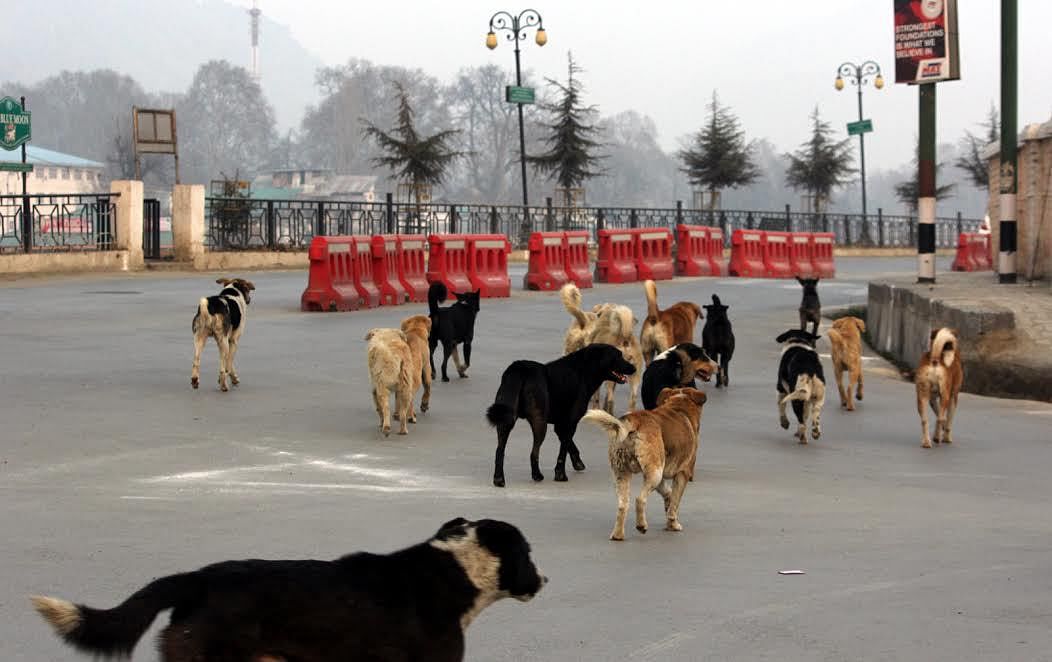By : Javid Amin | Srinagar | 22 June 2025
In the heart of paradise, a silent public health crisis is spiraling out of control.
From June 2024 to May 2025, 12,833 bite cases—primarily from stray dogs and unvaccinated cats—were reported at the Anti-Rabies Clinic (ARC) of SMHS Hospital in Srinagar, according to official hospital data. The figure marks the highest annual spike in over a decade, turning what was once a manageable nuisance into a full-blown emergency.
But what truly elevates this crisis from a statistic to a tragedy is this: 98% of the dog bite victims were children—a staggering number that demands not just attention, but accountability, action, and reform.
Anatomy of a Crisis: The Numbers That Bite
According to the ARC, the breakdown of bite cases is both disturbing and revealing:
-
6,258 dog bites: Nearly all caused by stray or semi-feral dogs, many of which roam school zones, playgrounds, residential streets, and garbage-laden public spaces.
-
6,095 cat exposures: This marks an unprecedented rise in feline-related injuries, directly linked to the unchecked rise in pet ownership without mandatory vaccination or neutering.
-
480 other animal-related exposures, including monkeys and cattle.
The sharp rise in unvaccinated domestic cat exposures reflects a growing urban behavioral trend—more Kashmiris keeping pets without adhering to public health regulations.
Children: The Collateral Damage of Policy Paralysis
What makes this public health catastrophe especially grave is the overwhelming pediatric exposure. Nearly 98% of dog bite victims are children, most between the ages of 3 and 12, according to SMHS data. These children are often attacked on their way to school, while playing outdoors, or near garbage dumps that attract aggressive strays.
“We’re witnessing a pediatric rabies disaster in the making. Every scratch or bite is a potential death sentence without urgent medical care,” warns Dr. Shahzada Mohammad Salim Khan, head of Community Medicine at Government Medical College (GMC) Srinagar.
Dr. Khan underscores that rabies is 100% fatal once symptoms appear, but 100% preventable if timely vaccination is administered. The public, he stresses, remains dangerously unaware of this window of prevention.
Stray Dogs and the Politics of Apathy
Despite the recurring headlines and social media outrage, the municipal and animal welfare response in Kashmir remains woefully inadequate. The Srinagar Municipal Corporation (SMC), which is responsible for stray dog management, has long struggled with staff shortages, budget gaps, and lack of coordination with veterinary and health departments.
Instead of implementing a comprehensive Animal Birth Control (ABC) program, including sterilization and vaccination, authorities have relied on sporadic, underfunded interventions, which experts say barely scratch the surface of the problem.
“We’ve issued tenders, made committees, even started pilot sterilization programs, but the execution is a joke,” admitted a former SMC official anonymously. “It’s governance by press release.”
The last major ABC campaign was halted mid-way in 2022, reportedly due to administrative delays and contractor disputes.
Why Cats Are Now Part of the Crisis
Historically, dog bites dominated the anti-rabies discourse in Kashmir. But this year, cat exposures nearly matched dog bites—a first in the region’s medical record. The trend is directly tied to urban pet ownership and a lack of mandatory veterinary registration, vaccination certificates, and neutering policies for felines.
“Cats can be rabies vectors too. Most people think a small scratch from a pet is harmless. That myth can kill,” Dr. Khan said.
With no legal requirement for cat vaccinations, a wave of unregulated pet adoption during COVID-era lockdowns has now come back to bite.
The Policy Void: Where is the Response Plan?
There is no comprehensive state-wide rabies control policy in Jammu & Kashmir. While other states have moved toward structured frameworks combining public health, animal welfare, and civic enforcement, Kashmir lacks a cohesive strategy.
This policy vacuum is further exacerbated by:
-
Poor inter-departmental coordination between health, municipal, animal husbandry, and education departments.
-
No real-time data tracking on animal population, vaccination status, or bite incident clusters.
-
Public ignorance on post-exposure protocols and availability of vaccines.
-
Low political priority, as animal bite cases rarely impact election outcomes.
The Human Cost: Children Left Scarred—Literally and Figuratively
Parents across the Valley recount horrific stories of children mauled by dogs on their way to school. In Baramulla, a 7-year-old boy needed multiple reconstructive surgeries. In Pampore, a girl was left with nerve damage after a stray latched onto her leg for over 30 seconds.
“These are not isolated incidents. We are losing our children’s safety—and their smiles—while the administration debates tender clauses,” said Nasreen Bhat, a school principal in Pulwama.
Schools have now started informal awareness sessions on how to avoid animals—a role the government should be playing through public awareness campaigns and school engagement programs.
What Needs to Be Done—Now
As a senior editor and political analyst, the writing is on the wall: This is not just a health crisis—it’s a governance failure. Here’s what must be done urgently:
-
Immediate relaunch of a state-backed Animal Birth Control (ABC) campaign, in collaboration with NGOs and veterinary experts.
-
Mandatory pet registration and vaccination certificates, including fines for non-compliance.
-
Deployment of rapid-response teams in high-incidence zones to manage aggressive strays and assist victims.
-
School-based education programs on rabies prevention and first aid.
-
Data transparency and public dashboards on bite case trends and treatment availability.
Bottom-Line: Will the Government Bite Back—or Just Watch?
With 12,833 bite cases and children comprising the overwhelming majority of victims, Kashmir’s animal bite crisis is not just about rabies—it is about neglect, policy failure, and political indifference.
If the administration does not act decisively—and immediately—it risks turning what is now a medical emergency into a public trust disaster. Inaction today could lead to funeral pyres tomorrow—because rabies doesn’t wait for red tape.
The question is no longer whether we have a problem. It’s whether those in power have the courage to fix it.



